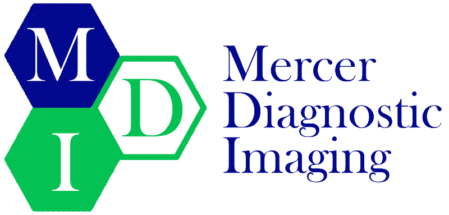Our Services
CT
Computed Tomography is an imaging method that uses X-ray, along with powerful computers, to generate high-resolution images of any part of the body.
CT scans are routinely used to gather diagnostic information about the brain, neck, chest, abdomen, and pelvis. It is also a highly effective way to gain information about the skeletal system. In some clinical scenarios, 3-D images are created to assist in the diagnosis. If the doctor suspects a stroke or bleeding within the brain, a CT scan may help pinpoint the location and problem. This test is also used for examining the sinuses and facial structure.
Lowering the bar on radiation exposure
LDCT: Low Dose CT is a special type of Chest CT scan that screens the lungs for cancer. The USPSTF recommends annual screening for lung cancer with low-dose computed tomography (LDCT) in adults aged 55 to 80 years who have a 30 pack-year smoking history and currently smoke or have quit within the past 15 years.
All CT exams utilize dose control measures to keep the radiation dose as low as possible.

PREPARATION FOR CT:
- Abdomen (Gallbladder, Liver, Pancreas, Kidneys)
- Nothing to eat or drink 4 hours prior to your exam. (You may drink water)
- You may be asked to pick up a Barium Drink to have the day before and day of your appointment.
- Pelvis
- Nothing to eat or drink 4 hours prior to your exam. (You may drink water)
- You may be asked to pick up a Barium Drink to have the day before and day of your appointment.


MRI (Magnetic resonance imaging)
Magnetic resonance imaging (MRI) is a noninvasive medical procedure used to produce detailed pictures of organs, soft tissues, bone and virtually all other internal body structures. Magnetic resonance imaging (MRI) does not use ionizing radiation. Under controlled circumstances, magnetic field and radio frequency energy are used to create computer images. These images are then interpreted by our Radiologists trained in neuroradiology, body imaging and orthopedic radiology.
Before undergoing an MRI, alert your doctor if you have implants, metal clips, or other metallic objects in your body as these can be affected by the magnet.

PREPARATION FOR MRI:
- Abdomen (Gallbladder, Liver, Pancreas, Kidneys) or MRCP
- Nothing to eat or drink 6-8 hours prior to your exam. (You may drink water)
- Pelvis
- Nothing to eat or drink 4 hours prior to your exam. You may be asked to empty your bladder prior to starting the study.
- Any MRI with contrast injection (Brain, IAC’s, Orbits, Pituitary, Extremities, Spine)
- Nothing to eat or drink 4 hours prior to your exam. (You may drink water)
US
Ultrasound is a diagnostic tool that uses a transducer, or probe, to generate sound waves and computer technology to produce pictures of internal structures. Ultrasound can be used to evaluate breast lumps and abnormalities seen on mammograms.
Using a special form of ultrasound called Doppler, the speed and direction of flowing blood can be measured and illustrated in color pictures. This Doppler technique allows radiologists to find blocked blood vessels.
Ultrasound is safe, painless and can often provide information that eliminates the need for more expensive tests or surgery.

PREPARATION FOR US:
- Aorta, kidney, or upper abdominal studies:
- Do not eat or drink for eight hours prior to the procedure.
- Pregnancy, bladder, pelvic, pelvic with transvaginal:
- Empty your bladder 90 minutes prior to the study and drink 32 ounces of water. You can take up to 30 minutes to finish the entire 32 ounces of water; the fluid must be consumed one hour prior to your appointment time. Do not empty your bladder until the exam is complete.
X-Ray

Digital x-rays offer countless benefits over traditional imaging techniques. While traditional x-rays have generally been considered safe, digital x-rays require the use of 80 percent less radiation than traditional images.
X-rays are forms of electromagnetic radiation similar to light. They are higher in energy and can penetrate the body so that images of internal structures can be obtained. X-rays are used to expose a photographic plate or digital sensor. X-rays show parts of the body in various shades of gray, with some structures (e.g. bone) appearing whiter than organs (e.g. lungs) which appear darker on the image.


Thyroid Biopsy

Ultrasound-guided thyroid biopsy is a procedure that removes a small sample of tissue from your thyroid gland. Your thyroid gland is located in the front of your neck. Tissue is removed through a hollow needle and then sent to the lab for analysis.
No preparation is required.
You may eat and take medication as usual.
